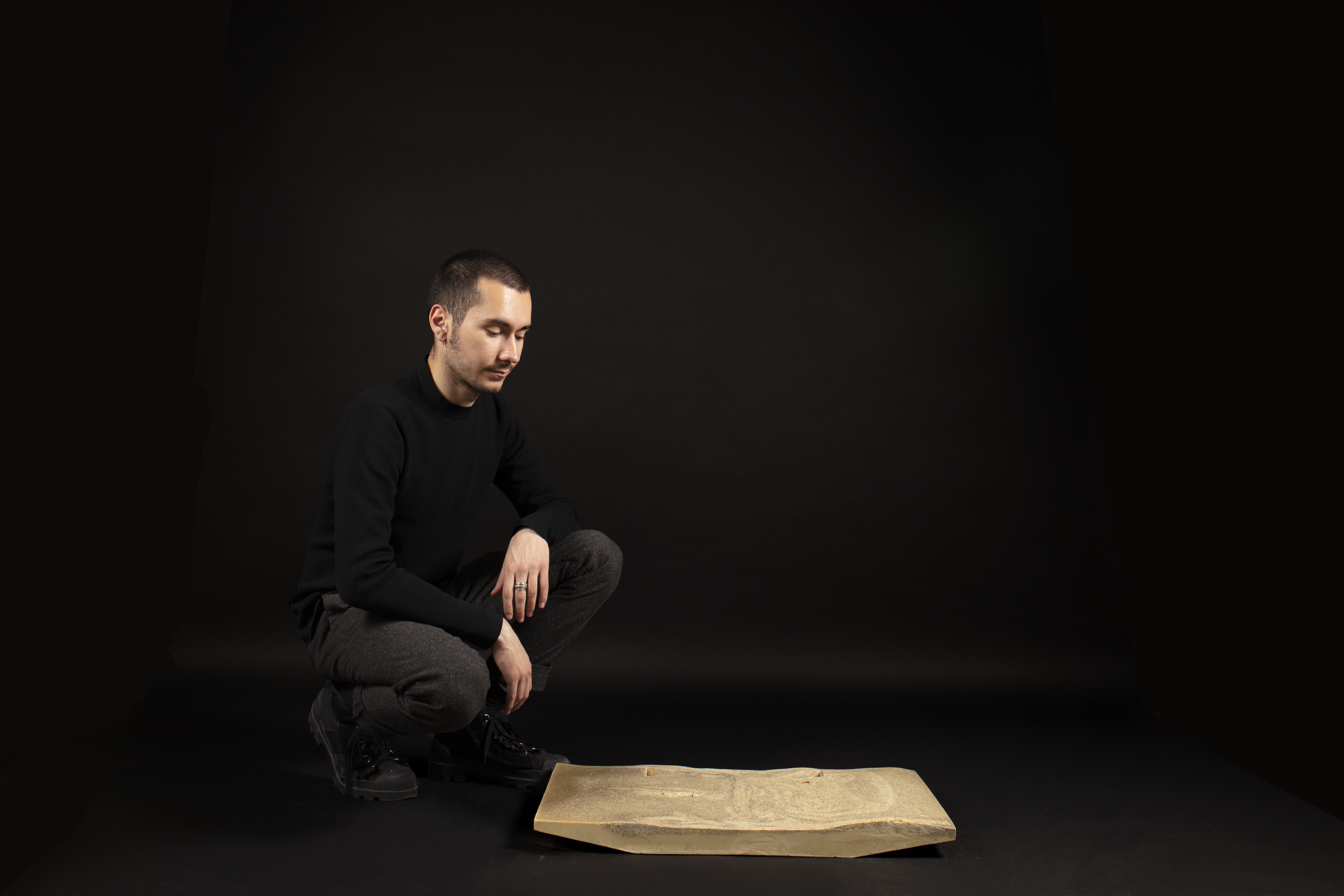02 THYSIA
DOC 234—34/2
AUTHOR: ARTHUR GOUILLART
KEYWORDS: Waste, Ritual, Sculpture, Recycling, Furniture design, Sacrificial architecture, Casting
KEYWORDS: Waste, Ritual, Sculpture, Recycling, Furniture design, Sacrificial architecture, Casting
Bones represent 32% of the weight of cattle, with a total of 7.5 billion tons produced each year. Bonemeal is the main product made from the bones, but since the mad cow disease health scandal, its uses have been relegated to pet food and soil fertiliser. Bone meal is the main ingredient for pet food in the U.S. and a really popular soil fertilizer. While the biomimeticism of bone structure is regarded as a promising technology with the potential to shape our future, bonemeal itself is abandoned as undesirable waste.
In ancient Greece, as part of the preparation of meat for consumption, bones were offered to the gods in a ritual called ‘Thysia’. Understood as the immortal part of a being’s body, the bones dedicated to the offering were referred to as ‘the God’s share’. Reflecting on contemporary attitudes towards bones as disposable waste material, this project draws inspiration from sacrificial architecture and uses bonemeal to cast a monolithic sculpture and modular piece of furniture.
Thysia features the signifying qualities of a classical monument possessing a sacrificial function: a curved plate framed by elevated corners. Comprising 70% of bonemeal and 30% polyurethane, each chair contains the equivalent of 10 kgs of bones and is created from custom-made molds.
In ancient Greece, as part of the preparation of meat for consumption, bones were offered to the gods in a ritual called ‘Thysia’. Understood as the immortal part of a being’s body, the bones dedicated to the offering were referred to as ‘the God’s share’. Reflecting on contemporary attitudes towards bones as disposable waste material, this project draws inspiration from sacrificial architecture and uses bonemeal to cast a monolithic sculpture and modular piece of furniture.
Thysia features the signifying qualities of a classical monument possessing a sacrificial function: a curved plate framed by elevated corners. Comprising 70% of bonemeal and 30% polyurethane, each chair contains the equivalent of 10 kgs of bones and is created from custom-made molds.




